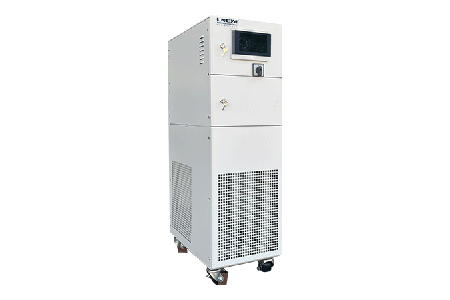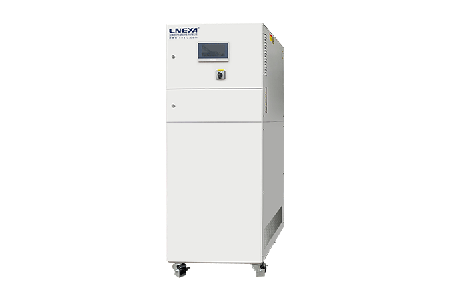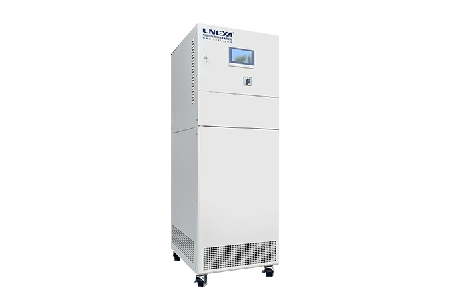What Are Refrigerant And Coolant In Refrigeration System?
Many people have trouble distinguishing between refrigerants and coolants. This blog post explains the definitions of both, highlights the key differences between them, and explores their respective roles in a chiller’s refrigeration system.
What Is Refrigerant?
We know that in nature, heat always flows from warmer areas to cooler ones. What makes a refrigerant unique—and earns it the name—is its ability to reverse this natural flow. A refrigerant is capable of taking in heat from colder air and discharging it into warmer air. In effect, it extracts “cooling” from warm air by redirecting the flow of heat. This ability to create a cooling effect even in a hot environment is what defines a refrigerant.
What Is Coolant?
A coolant plays only a supporting role in refrigeration systems. Its primary function is to carry and transport heat from a higher-temperature area to a lower-temperature one. It simply serves as a medium for the natural flow of heat.
For instance, in the refrigeration cycle system of a chiller, heat from the object being cooled is first transferred to the coolant. The coolant then carries that heat to the refrigerant, which is at a lower temperature. Throughout this process, the direction of heat transfer always follows nature’s rule—moving from high temperature to low temperature.
Refrigerant VS Coolant: Understanding The Difference
Refrigerants, also known as cooling media, play a key role in chiller refrigeration systems by absorbing, transferring, and releasing heat. During operation, the refrigerant undergoes phase changes as it switches between liquid and gas states.
In general, refrigerants are expected to have excellent thermodynamic properties. Specifically, the critical temperature should be higher than the condensation temperature, and the saturated pressure at the condensation point should not be excessively high. Optimal refrigerants also feature a low normal boiling point, low specific heat capacity, low adiabatic index, high heat transfer per unit volume, high thermal conductivity, low viscosity, low density, and robust chemical stability.
However, a coolant functions like a delivery agent, carrying the cooling energy generated by the refrigeration system to the areas requiring temperature control. During this process, the coolant remains in the same phase and does not undergo any phase change.

What Are The Common Types Of Refrigerant Used In Industrial Chillers?
- R23
- R404A
- R508B
- R507C
- R134A
- R407C
- R410A
What Are The Common Types Of Coolant For Industrial Chillers?
- Water
- Thermal oil (heat transfer oil)
Thermally conductive silicone oil is non-toxic, colorless, and odorless. When used under pressure in a closed system, its concentration needs to be monitored.
- Ethylene glycol-water solution
An ethylene glycol-water solution is a highly effective option for low-temperature control applications.
- Brine solution (saltwater solution)
Brine solutions—typically sodium chloride or calcium chloride in water—are highly corrosive. When used in a chiller system, special materials are required for the heat exchanger and pump to withstand the corrosion.
- Fluorinated oil (fluorinated fluid)
Fluorinated oil is non-flammable and is primarily used in the semiconductor industry. However, systems that use fluorinated oil typically involve higher investment costs.
- Ethanol
Ethanol has a high risk factor—it is flammable and potentially explosive. It is suitable for low-temperature applications and can be used in refrigeration systems down to -110°C (-166°F). When in use, the circulation pump must be properly sealed. If the volume used exceeds 500 liters, concentration monitoring is required.
- Liquid dichloromethane
When using liquid dichloromethane as a secondary coolant, the surrounding environment must be open and well-ventilated.
The Role Of Refrigerant And Coolant In Efficient Cooling
In a chiller system, the refrigerant moves through a closed-loop cycle. Inside the evaporator, it absorbs heat from the object being cooled and changes into a vapor. It then moves to the condenser, where it discharges the absorbed heat into the surrounding environment and transforms back into a liquid. The chiller’s refrigeration system relies on the phase changes of the refrigerant to achieve cooling.
The coolant, or cooling medium, is first cooled by the refrigerant in the evaporator. It is then directed to the cooling equipment, where it absorbs heat from the object being cooled, and subsequently returns to the evaporator to be cooled once more. This cycle continues to transfer cooling to the target environment.
In a refrigeration system, the refrigerant is essential—there can be a system without a coolant, but never without a refrigerant.
Add our account manager via the QR code below

WeChat/Phone
86 18914253067

86 13912479193

Email Address
sales@cnzlj.com
Recommended chillers

LTZ +5℃-90℃
glycol chillers
Cooling capacity 4kW~20kW
Heating power 3.5kW~15kW
temperature accuracy ±0.3℃

LTZ -40℃~90℃
fluid chillers
Cooling capacity 0.7kW~11.5kW
Heating power 2.5kW~10kW
temperature accuracy ±0.3℃

LTZ +5℃~30℃
laboratory chillers
Cooling capacity 23kW~155kW
Circulation Pump MAX 5m³/h~28m³/h 2bar
temperature accuracy ±0.5℃

LTZ -25℃~30℃
sub zero chillers
Cooling capacity 7kW~64.5kW
Circulation Pump MAX 2.5m³/h~15m³/h 2bar
temperature accuracy ±0.5℃

LTZ -45℃~20℃
coolant chillers
Cooling capacity 5.7kW~32.4kW
Circulation Pump MAX 1.5m³/h~7.7m³/h 2bar
temperature accuracy ±0.5℃

LTZ -60℃~-30℃
air cooled chillers
Cooling capacity 6.2kW~31.7kW
Circulation Pump MAX 2.4m³/h~12.1m³/h 2bar
temperature accuracy ±0.5℃

LTZ -80℃~-50℃
water cooled chillers
Cooling capacity 3.7kW~30kW
Circulation Pump MAX 2.3m³/h~12m³/h 2bar
temperature accuracy ±0.5℃

LTZ -115℃~-80℃
cryogenic chillers
cooling capacity 0.6kW~2.8kW
Circulation Pump MAX 20L/min~40L/min 2bar
temperature accuracy ±0.5℃
 LNEYA Industrial Chillers Manufacturer Supplier
LNEYA Industrial Chillers Manufacturer Supplier










